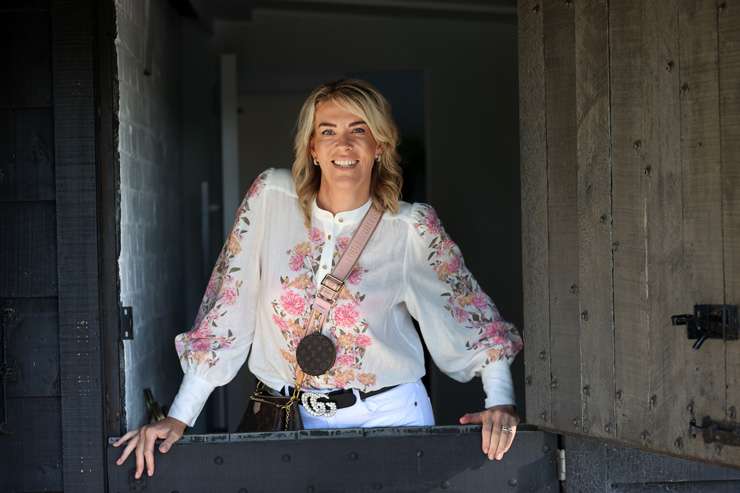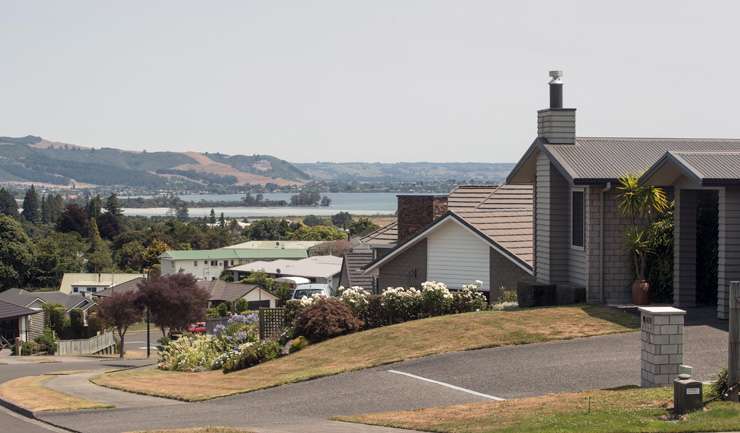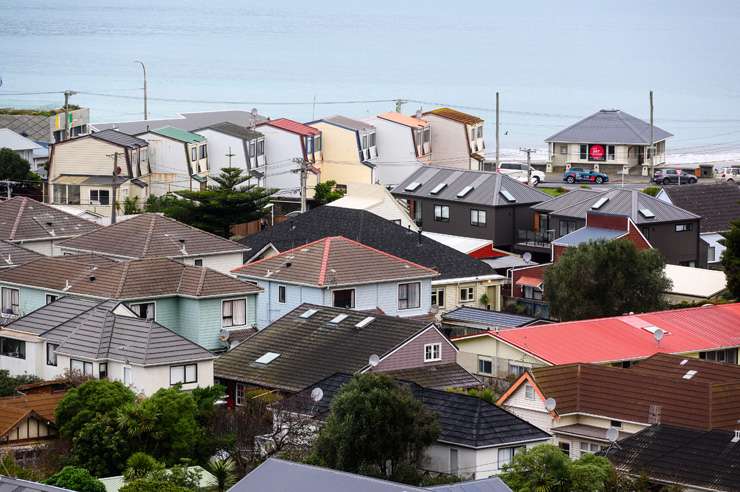Despite the vagaries of the economy and the housing market, OneRoof research shows most people who resold in the last five years still made paper profits.
The data also shows there are 48 golden suburbs where not a single seller in the last five years made a loss.
The suburbs were scattered across the country and included some of the most expensive places to buy property but a large number are fit for first-home buyer and investor budgets.
OneRoof and its data partner Valocity analysed all the settled residential resales between 2018 and Q1 2023, and identified which ones sold for a profit and which ones sold for a loss.
Start your property search
OneRoof and Valocity analysed 304,079 properties and found 296,496 made a profit – that’s 97% - with most of the no-loss suburbs having an average property value of under $1 million.
The data shows most sellers escaped the worst of the housing market slump and those bucking the trend and making a loss are likely to include people who bought during the post-Covid heights of the market when prices were high and interest rates low, but who ran into difficulty when interest rates rose and have had to sell for less than what they paid.
So far this year, however, the percentage of properties reselling at a loss is still small, with just under 6% of nationwide sales in the first three months of the year going for below the initial purchase price.
While that’s up on the 2.1% recorded in 2022, the jump comes at a time when the market is in the midst of its worst slump since the GFC.
The five-year data showed some surprises:
• Auckland has suffered the most in the housing downturn with only one suburb showing up as not making a loss and that’s the rich beachside suburb of Omaha on the northern outskirts of the city. Omaha has made some giddy gains for owners – the median profit of $446,500 in 2018 jumped to $2.21m last year.
• By contrast Wellington region, which boomed then plummeted more than anywhere, has a dozen no-loss suburbs.
• Other suburbs which only made their vendors’ profits include handfuls in Rotorua, Hawke’s Bay, Whangarei, and Dunedin, with others dotted around the country.
• Agents spoken to described many of the cheaper suburbs that did not make a loss as starting from a low base, or as suburbs which were under-valued but which jumped in value.
• Many also said while prices have come back, the gains made over five years are enough to provide a strong buffer against losses.
Wayne Shum, senior research analyst with Valocity, says some of the losses that did happen are probably people who bought a property with problems, such as a leaky townhouse, and those who overpaid by big margins in Auckland during the FOMO (Fear of Missing Out) frenzy after Covid.
Any market sees some properties sell for less than the purchase price, Shum says, with reasons including the likes of divorce but more recently in Auckland it’s down to developments not working out which could account at least in part for why Auckland has a dearth of no-loss suburbs.
“You've got a lot of resales in South Auckland, where people that paid $2m for a 1000sqm site are now getting back $1.5m.”
There was a lot more speculation in Auckland than the rest of the country, he says.
“You think of those big sites where people thought ‘I can build six houses on it tomorrow and make megabucks’. Well, that’s not that easy. It takes three years to do that. There are a lot of those kinds of deals that happened.”
Shum points there were only about 180,000 resales in total in 2021 through to May this year, but that’s out of around 1.7 million properties nationwide, which means most people bought well before the housing market took off: “If you purchased before the boom, you're still coming off better.”
He also says because Auckland property is more expensive, people have to borrow sometimes hundreds of thousands of dollars more than they do in other areas - a house in the regions that sells for around $400,000 is easier to handle when interest rates rise. “In Auckland your loan’s up at $800,000, $900,000; there's a lot less wiggle room.”
Wealthy buyers
Big loans are not much of an issue in Omaha, where agents report clients on the whole are wealthy enough not to need them.
It’s no secret people with money – make that lots of money – buy in the seaside suburb about an hour or so from Auckland’s CBD, and Omaha, once just farmland and sand, is now seen as a playground for the wealthy.
Last year, the 20 settled resales in the suburb collectively enjoyed profits of just over $50m, almost quadruple the collective profits for 2018.
The suburb is largely developed now and agents say buyers view Omaha as a suburb that you don’t lose money in.
Sometimes the sales of multi-million properties go to people who already own a stylish beach house there but who want a better location.
Agents refer to this as the “Omaha shuffle”, where people in a house one street back from the beach might be eyeing up a house right on the beach and be prepared to pay $7m for it, or they might want one that backs on to the 18-hole golf course, like a house Precision agent Di Balich sold to locals in May for $3.3m within days of listing it.

Ray White agent Heather Walton: “Even though the market is down a lot of people are still pursuing the Omaha dream because they do make profits. You don’t lose money up here.” Photo / Fiona Goodall
She says big profits seen since the Covid era have a lot to do with people reassessing their life aspirations, not only rethinking their own lifestyles but looking to secure assets for future generations. “A lot of people are kind of planning for the future.”
But Omaha, where former Prime Minister John Key once owned a holiday home, is also popular with wealthy people because they can wear shorts and blend in.
“I think there are a lot of interesting people and high net worth individuals that roam around and they don’t give a continental.”
Not everyone is loaded, however, she says. Some people had the foresight to buy early and extend themselves to get into Omaha which even 10 years ago was under-valued.
A section that sold for $450,000 ten years ago would likely fetch $2m today, and scarcity is another factor which has pushed profits up. Balich says the last available sections sold in the last few years which produced a spike in land value.
Always in demand
Heather Walton, Ray White Matakana’s principal, says people like the straight drive up from Auckland, as it is safer for visiting teenage children to drive, especially with Orewa now being considered one of the hotspots where teens go for Christmas and New Year’s Eve.
She says more people than ever are making life changes and moving to Omaha permanently, and she is one of them.
Walton sold in Auckland’s grammar school zone for many years using her holiday home in Omaha as just that but decided she did not want to go back to Auckland.
“I attend the local yoga classes and every woman in the class just about says ‘I've just recently moved up here permanently’.
Read more:
- Can NZ expect an Australia-like revival in house prices?
- Tony Alexander: First home buyers waiting for further price falls likely to come unstuck
- Revealed: Sir John Key’s former mansion sold for $16.3m - but still made a loss
“Even though the market is down a lot of people are still pursuing the Omaha dream because they do make profits. You don’t lose money up here,” she adds.
Wayne Scurrah, Bayleys sales manager for Mahurangi, is another who has transitioned to the area from the Auckland market.
He says Aucklanders are pushing the values up, saying half the buyers coming to the wider area are from Auckland and that the number who want Omaha is higher still: “It's always in demand, I don't think it ever drops off.”
Affordable suburbs
Shum says while suburbs like Omaha stand out for the big gains, most of the increase has been seen across lower value suburbs because that’s where most of the transactions have happened.
A case in point is Enderley, the only suburb in Hamilton to feature in the no-loss suburbs list.
But unlike Omaha, Enderley is one of Hamilton’s cheapest and most under-valued suburbs, says Jeremy O’Rourke, managing director of Lodge Real Estate.
It has, however, seen substantial change over the last five years with a lot of former state houses removed to make way for new townhouses. The improved housing has lifted large parts of what is a big suburb in a strong location.
“As the city spreads it's actually well placed because it's a suburb with easy access into the city and very easy egress away from the city either to Auckland or the eastern beaches so it may over time become more valued just because of that location.”

Lynmore is one of Rotorua's most expensive and prized suburbs. Photo / Stephen Parker
Further south, Rotorua grabbed three suburbs on the list – Lynmore, the “Remuera” of Rotorua, Mangakakahi and Sunnybrook.
Jacqueline O’Sullivan, principal/business owner of Ray White Rotorua, says Lynmore is highly rated for its primary schools, much like the Auckland grammar zone.
“If you can afford to live in that neighbourhood and your children to go to that school, you're kind of set up for the future type of thing.
“In Lynmore you're not over-capitalising no matter what you do.”
On the other hand, Mangakakahi and Sunnybrook, both five minutes’ drive to the CBD, are favourites with first-home buyers.
The last five years have treated Rotorua’s resellers well, O’Sullivan says.
“If you look at it long-term, nobody's lost money. It's just when you bought it in the peak and you have to sell that's probably when you were going to make a loss but if you hang in there it's going to come right.”
Surprising results
Up in Northland, the suburbs of Hikurangi, Morningside and Ruakaka made the no-loss list. Tony Grindle, Bayleys Northland general manager, says these are not bulletproof suburbs so much as ones that have come off a particularly low base.
“They've never been considered the most sought-after but price points being what they are, that's what's driven attention to the suburbs.”
They span the city limits with Hikurangi in the north, Morningside in the middle of town and Ruakaka to the south.
Ruakaka, known for its spectacular beach, has seen expensive properties grow up around it but the suburb of Ruakaka itself is not pricey, he says.
“Ruakaka is typically the blue-collar area built for Marsden Point Oil Refinery so the history of Ruakaka, if you go back far enough, is all about providing housing for the workers that came in from offshore and New Zealand to work and develop Marsden Point.”
Hikurangi is surrounded by farmland and was built around the freezing works, and further back coal mines, while Morningside is a popular north-facing suburb in town which has affordable housing.
Another no-loss suburb just south of the Brynderwyns is Kaiwaka, in between the beach mecca of Mangawhai and Kaipara Harbour to the west.
Aucklanders seeking a more affordable and traditional rural lifestyle, where they can have chickens and other animals, have again contributed to Kaiwaka’s no-loss status.
Grindle says Aucklanders flocked north after Covid and are still making up to 30-40% of all residential sales for Northland.
Down in Hawke’s Bay, Stuart Christensen, general manager with Tremains for the central region, was a little surprised at his area’s no loss suburbs, Clive and Saint Leonards in Hastings and Bluff Hill in Napier.
The suburbs have varied house types and price ranges, and in Bluff Hill, for example, $1m homes with a view and sun will sit alongside $600,000 homes that don’t have a view or sun.
Perceptions of loss
One of the surprises of the data is Wellington region, which had 12 no-loss suburbs on the list, even though Wellington’s big price hikes during the boom were followed by big falls.
Grant Henderson, regional general manager for Bayleys, says during the boom average house prices were in the $900,000s but that has fallen to the low $700,000s.
Even so, over five years 80 or 85% of people would still have done well, he thinks.
He says he sees vendors who think they are making a loss because their property is not fetching what it would have during the good times, not realising they are simply not making the heady gains made 18 months ago.
“It’s an interesting game at the moment. The vendor’s perception of loss is simply paper loss and not actual loss.”
Wellington’s 12 no-loss suburbs also span the city, from Upper and Lower Hutt and Porirua City to Wellington City.

Wellington is home 12 no-loss suburbs, even though the region has been hit hard by the downturn. Photo / Getty Images
Henderson says people who bought in Lower Hutt 18 months ago who have to sell will be “in a world of pain” but they are probably people who probably bought townhouses and new-builds off-the-plan for sums the properties are no longer worth in today’s market.
Some of the suburbs, like Cannons Creek in Porirua City and Kilbirnie and Ngaio in Wellington City, were very under-valued five years ago, he says.
There has been significant gentrification taking place in the likes of Kilbirnie and Ngaio with older villas bought up and renovated by younger people.
Kelburn, one of Wellington’s elite suburbs, is also on the list. Sales over $2m are not uncommon in Kelburn but Henderson says Kelburn had such a massive rise for it to fall back 20% didn’t matter.
Take the money and run
Dunedin, too, in the chilly south of the country, had eight no-loss suburbs on the list, although Jo Nidd, owner/principal of Nidd Realty, was cautious, saying Dunedin’s sample sets are small at the best of times and there can be “funky” results.
All the suburbs on the OneRoof list – Abbotsford, Belleknowes, Corstorphine, Halfway Bush, Kaikorai, Maori Hill, Musselburgh and Waverley – saw strong growth prior to the pullback of the market so it would be expected people who bought five years ago would make gains, but that’s true of any suburb in Dunedin, Nidd says.
“If you'd said 18 months ago or two years it's very unlikely any of those suburbs would be sitting above where they were 18 months ago at that real peak of the market.”
Shum points out the gains made are paper ones because once holding and interest costs are factored in, it’s debatable how much profit has really been made.
But there will be more profit-making to come for one group of sellers this year, he thinks. The five-year bright-line test period is up for investors who bought in 2018 so there could be a spike of people “taking the money and running” now they can sell up without incurring a tax on the profit.
- Click here to find properties for sale









































































